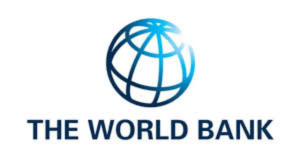Bangladesh’s economy is expected to grow at a faster pace in FY26, with GDP growth projected to rise to 4.8 percent, up from 4.0 percent in FY25, according to the World Bank’s latest Bangladesh Development Update, released Tuesday.
The report attributes the projected recovery to improved macroeconomic conditions in the second half of FY25, including robust export performance, record remittance inflows, and a stabilization of foreign exchange reserves.
The World Bank forecasts that growth will continue to accelerate, reaching 6.3 percent in FY27, but stresses that this trajectory hinges on the country’s ability to implement key structural reforms.
“The economy has shown resilience, but this cannot be taken for granted,” said Jean Pesme, World Bank Division Director for Bangladesh and Bhutan. “To ensure a strong growth path and more and better jobs, Bangladesh needs bold reforms and faster implementation to enhance domestic revenue mobilization, banking sector vulnerabilities, reduce energy subsidies, plan urbanization, and improve the investment climate.”
The report notes that while inflation has moderated and external pressures have eased, challenges remain. Fiscal deficits have widened due to low tax revenues and increased spending on subsidies and interest payments.
At the same time, poverty rose between 2023 and 2024, and labor force participation declined—particularly among women.
To sustain and accelerate growth in FY26 and beyond, the World Bank urges reforms in tax policy, financial sector governance, and energy pricing, alongside efforts to improve job creation, especially for youth and women.
The Bangladesh Development Update was published alongside the South Asia Development Update, which forecasts that regional growth will remain strong at 6.6 percent in 2025.
However, it warns of emerging risks and calls for proactive policies to improve trade openness and adopt productivity-enhancing technologies such as artificial intelligence.
“South Asia has enormous economic potential and is still the fastest growing region in the world. But countries need to proactively address risks to growth,” said Johannes Zutt, World Bank Vice President for South Asia.
Franziska Ohnsorge, the World Bank’s chief economist for South Asia, noted that greater trade openness and wider adoption of AI could play a transformative role in the region’s economic development. She emphasized that policies enabling the movement of workers across firms, sectors, and regions are crucial for directing resources to more productive areas, thereby boosting investment and employment.

